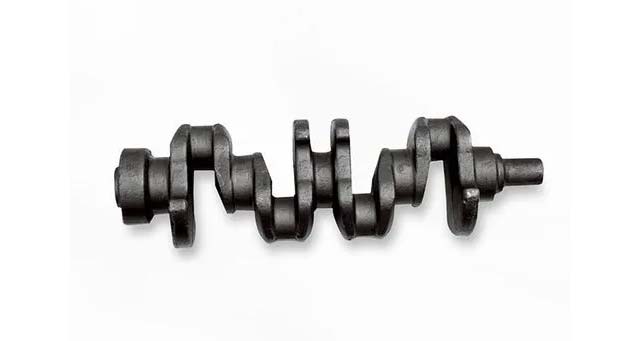- Contact Innally, Let you purchase forgings in China more favorable prices, products more assured!
- Hotline:+(86)15038323776 Email:innally@innally.com
How to optimize the mechanical properties of crankshaft forgings?
- Category: Forgings for construction, Stainless steel forging
- |
- Date: 17/10/2023
An engine manufacturer has significantly improved the mechanical properties of crankshaft forgings by adjusting the chemical composition, improving the forging process and optimizing the cooling method. Specifically, they used high-carbon steel, increased the content of manganese and chromium elements, while using high-temperature die forging and isothermal forging processes to precisely control the degree of deformation and cooling rate, thus improving the strength and toughness of the crankshaft forgings. After these optimization measures, the performance and life of the engine have been significantly improved.
Product Details
Crankshaft forging is the key part of engine, and its mechanical properties have an important effect on the performance and life of engine. Therefore, optimizing the mechanical properties of crankshaft forgings is of great significance. This paper will discuss how to optimize the mechanical properties of crankshaft forgings.
- Factors affecting the mechanical properties of crankshaft forgings
Chemical composition: The chemical composition of crankshaft forgings directly affects their mechanical properties. The content of carbon, alloying elements and their content and distribution in alloy steel will affect the mechanical properties.
Forging process: Forging process includes heating temperature, deformation degree, cooling speed, etc. These factors will affect the mechanical properties of crankshaft forgings.
Cooling method: The cooling method will also affect the mechanical properties of the crankshaft forgings. Different cooling methods result in different grain sizes and internal stress states, which affect mechanical properties.

Second, measures to optimize the mechanical properties of crankshaft forgings
Adjusting the chemical composition: Optimizing the carbon content and alloying element content as needed can improve the mechanical properties of crankshaft forgings. For example, increasing the content of the elements manganese and chromium can improve strength and toughness.
Improved forging process: By adopting advanced forging process, such as high temperature die forging, isothermal forging, etc., the mechanical properties of crankshaft forgings can be improved. In addition, precise control of deformation degree and cooling rate can also improve mechanical properties.
Optimized cooling method: The appropriate cooling method can refine the grain and reduce the internal stress, thereby improving the mechanical properties of the crankshaft forgings. For example, the use of water or oil cooling can speed up cooling and improve mechanical properties.
- Case analysis
An engine manufacturer has significantly improved the mechanical properties of crankshaft forgings by adjusting the chemical composition, improving the forging process and optimizing the cooling method. Specifically, they used high-carbon steel, increased the content of manganese and chromium elements, while using high-temperature die forging and isothermal forging processes to precisely control the degree of deformation and cooling rate, thus improving the strength and toughness of the crankshaft forgings. After these optimization measures, the performance and life of the engine have been significantly improved.
nannan
INNALLY mainly provides you with various types of cast and forged parts products. Welcome your inquiries! innally@innally.com
Related Products
Search
Forging center
- Steel forgings
- Aluminium alloy forging
- Titanium alloy forging
- Stainless steel forging
- Copper forging
- Automotive forgings
- Locomotive forging
- Bicycle forgings
- Motorcycle forging
- Rigging and fasteners
- Bearing forging
- Electric power fittings
- Marine forging
- Mechanical forgings for metalworking
- Mining machinery forgings
- Marine engineering forgings
- Construction machinery forgings
Popular product

© 2025. All Rights Reserved.






